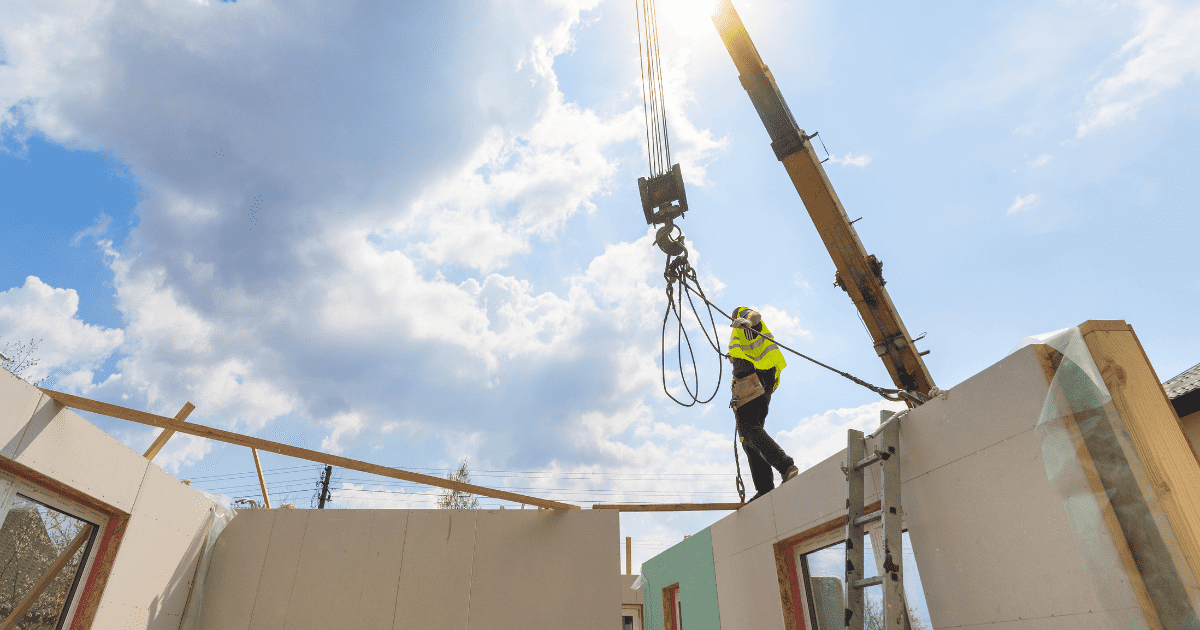Water licensing became mandatory in B.C. in March of 2022. Under the Water Sustainability Act (WSA), any individual, business or organization that plans to use surface or groundwater for non-domestic purposes, including irrigation, industrial, commercial or municipal uses, must obtain a water license. The water license will specify the exact terms and conditions for that land title’s water use, diversion, and storage.
Water for domestic purposes is exempt from licensing in most instances. Household water use includes drinking, cooking, bathing, watering pets and poultry, and fire prevention. But, if you’re clients are planning to register for farm status for agriculture purposes, even as a hobby farm, or run a commercial business, they will need to register the well or water source on the property.
If the seller has been using the well on the property for purposes other than domestic use, there should be recent WSA licensing documentation. There were landowners in the province who did not agree with the new licensing and cataloging of groundwater wells and did not register; you may come across this situation.
An informed agent should always advise clients to contact the provincial government or regional water management branch as guidelines and licensing regulations for the type of well or water source on the property they are vetting may be changing soon or need to be licensed or renewed.
There are 12 major watershed basins in B.C. that support close to 20,000 sq. kilometres of freshwater lakes, ponds, rivers and creeks. Annual rainfall and snowmelt replenish fresh surface water and, most importantly, underground aquifers, which exist where saturated rock or sediment allows surface water to penetrate through it.
The GWELLS database data reports that over 1,100 underground aquifers extending over 30,000 sq. kilometres have been mapped and registered in B.C.
Despite the abundance, some areas of the province are known to be very hard to locate groundwater. Sources can be hard to identify with geological formations affecting water flow direction deep within the earth.
In the Cariboo Region, known neighbourhoods exist in Clinton and Buffalo Creek/Forest Grove areas, among others. Get the local scoop by stopping in and talking to adjacent property owners, who can tell you how deep their well is, how many times they had to drill, and inquire about smell, taste, and quality.
Drillers get paid whether they hit water or not. They work with property owners to determine the best location to drill, but it is the property owner himself who makes the decision of where to put the X on the ground and takes full financial responsibility. The B.C. government hosts an online groundwater wells and aquifers database with an interactive map used by drillers to locate groundwater derived from provincially collected data.
Regardless, if the database shows groundwater under a property, it doesn’t mean an owner can drill anywhere they want and be successful. Be very careful when viewing or representing an undeveloped lot in an established rural subdivision, as title owners cannot drill for water within 100 feet of their neighbours’ septic tank and field, which limits the property’s drilling and dwelling locations.
For example, the Deka Lake Subdivision in the Interlakes area was subdivided into an assortment of 0.5 to one-acre adjacent lots that are being developed into full-time residences at a rapid pace. You must know the septic layout of all adjacent properties to determine where a new owner would be legally allowed to drill with the B.C. Code setbacks. In reverse, you can only install a septic system within a 100′ legal setback distance from any adjacent properties existing water well.
This is especially important if your clients are vetting recreational property they plan to develop in the future. Even if there are empty lots adjacent to the property today, within a few years, the new neighbours may install services in locations that could make your client’s long-term goals for the property impossible.
The best advice you can give to clients vetting raw or rural land without a water source is to contact a reputable well driller who will consult and provide a detailed drilling estimate, along with a well pump package estimate. Advise they also request a quote from a septic system installer who will consult on-site to determine where they can legally place both services, preferably before submitting an offer but definitely before removing subjects on any property without a water source.
Drilling a well is a great expense to title owners. To increase the odds of their success, you can let them know about reputable ‘water dowsers’ that locate sub-surface water. Certain people possess this unexplained but proven trait that allows them to find water with dowsing rods or bent willow. A well-known B.C. resident, Colleen Roberts, uses her very accurate process to make wells out of at least 95% of the sites she has been hired to dowse on.
Established rural properties with houses and dwellings will most likely have an existing water source and water system. The most common types you will come across include; drilled wells, shallow wells, sand-point wells, or a cistern well system. In rarer instances, a property may have a freshwater spring or a highly prized artesian well.
I recommend water quality testing be a contingency in any purchase contract on a property with an existing water well. Be aware that water quality testing only shows results from the day you test it, and well water quality can change over the seasons. Healthlink BC has a directory of water testing companies and is an excellent source of information on well water, a great resource for realtors and homeowners.
Drilled wells
Drilled wells are the most common and preferred reliable source, with an in-line pump that can be anywhere from 30′ to 300′ deep; they require a power source and pressure tank to move the water. A properly installed water well can last 40 years or more. The listing agent should have available for potential buyers the driller’s well log, a document created on the day the well was drilled that will tell you; who drilled the well, what depth they drilled to, the gallons per minute the well produces, and at what depth the pump is set at. If the homeowner does not have this documentation, they can try to locate it by first locating the wells identification plate number attached to the well casing or on the ground nearby.
The critical components of a drilled well you should familiarize yourself with are the age of the submersible pump and the condition of the pressure tank. The average lifespan of a well pump is 12 to 15 years, based on the frequency or how many times your pump is engaging during its duty cycle. The size of your pressure tank and water consumption will affect how often the in-ground pump cycles to fill the pressure tank.
On average, you need a minimum of five gallons per minute to run a household at peak water use, so water volume should be a flag in your vetting process. A large number of domestic wells in B.C. produce up to 50 gallons per minute, and the higher the volume, the better your chances are that the well is in a deep aquifer and will never run dry.
Shallow well
When the property you are listing or viewing has a shallow well, you could come across a system as crude as a large open pit dug by a backhoe that captures ground seep and run-off water to a hand-bored sand point with a hand pump or 12-volt solar pump for off-grid properties. Shallow wells are typically 25 feet below the ground’s surface or less and can experience taste and odour issues from mineral content like iron and manganese, and the risk of contamination increases for bacteria with a shallow water source.
Evaluate the slope and elevations of adjacent properties if they are developed to determine if seep, rain, or melt run-off water could carry contaminants to that well’s source. Farms, ranches, pastures, and neighbouring sewers or septic tanks can seep into shallow wells and aquifers. Do not be deterred from shallow wells that tap a clean source, they can be quite adequate for domestic use, and in some cases, a shallow source can be drilled deeper, accessing even more volume.
Cistern water system
A cistern water system as a primary source implies that water is hauled in or collected on-site, then contained and stored for use. Fresh water can last in a clean cistern for about six months and then requires regular maintenance cleaning. This is a viable option for seasonal or recreational properties or residential land that has no groundwater source. Cisterns come prefabricated in fibreglass and concrete, or they can be constructed on-site with concrete, bricks, and mortar. Underground storage tanks are the preferred method as sunlight breeds bacteria in water, but they can be found in basements or outbuildings.
Cistern systems can collect filtered rain/run-off water from dwelling roofs and can augment a shallow or low-flow drilled well to augment usage on any property.
Freshwater springs
Freshwater springs, which can present as a creek or pond, can be a quality, low-maintenance option if developed properly into a pumpable or gravity-fed filtered water system. There are many videos online about spring development and how to properly tap one by installing a small filtration dam with a PVC water output pipe which can then be pumped to filtration tanks or gravity fed to cisterns. Get the history of who and how the spring was developed from the current owner, if possible, with drawings and explanations.
If a previous owner developed the source, there might be no documentation, and you have to rely on known history. Be aware a tapped spring or diverted spring-fed creek may decrease in water volume in dry months, and it may also be prone to freezing in winter. As spring water is surface water, filtering it and treating it will be needed to ensure it contains no contaminants.
Artesian well
The prized artesian well flows from the ground in great volumes whether the land owner wants it to or not. This rare groundwater source can be both a blessing and a curse as there must be a way to effectively route the excess water you cannot use into a drainage tributary, or it will cause flooding and erosion.
Development around this type of continuously flowing well must be carefully planned. You can recommend researching artesian wells and consulting with a water system installer or driller who has experience with this rarer well type. An artesian well will increase the value of a property as it saves a title owner thousands of dollars on drilling and water pumping costs.
The lifeblood of any property is its water supply, and a knowledgeable agent will know how to assess and advise their clientele about water sources and systems so they can make an informed decision, minimizing the risk of a listing misrepresentation or an unhappy client.
Freddy & Linda Marks are with 3A Group Re/Max Nyda Realty in Agassiz, B.C. Freddy speaks English, German and some Dutch. His extensive background and personal contacts in the European community give him a unique position in the Canadian real estate industry. He has dedicated over 35 years to successful property sales, specializing in motels, investment properties, waterfronts, resorts, luxury homes, farms, ranch and acreages throughout B.C.
Linda was raised and educated in Germany and joined the family business in 2008. Because family roots in the real estate business run deep, Linda is able to access a huge network overseas, including attending real estate trade shows in Europe on a regular basis. She is using her creativity and knowledge in the role of listing specialist.














